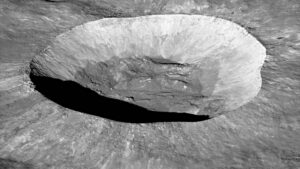Charles Waterton proved that being eccentric was no barrier to becoming one of the world’s greatest conservationists. He invented the bird-nesting box and created the world’s first wildlife sanctuary. He also introduced Europe to curare, a revolutionary plant extract that reduces animal suffering. In 1839, he won the earliest known case against pollution.

A cat’s head? Really? Charles Waterton may have been eccentric but he was also a well-respected 18th-century conservationist.
Waterton was born in 1782 to a prominent English family. During the Reformation, his family lost their titles. Locals fondly began calling Waterton Squire instead of Lord. He was kind and charming, but undoubtedly unusual.
His eccentricities first surfaced at Stonyhurst College, Lancashire. He skipped lessons in favor of killing vermin around the school grounds, running afoul of his teachers. He later wrote in his autobiography:
“I was considered rat-catcher to the establishment, and also fox-taker, foumart killer… I followed up my calling with great success. The vermin disappeared by the dozen; the books were moderately well-thumbed; and according to my notion of things, all went on perfectly right.”
Waterton was comfortable in his eccentricity and exuded confidence. When his uncle died, he seized the opportunity to travel, first to British Guiana (now Guyana) in 1804 to take over the estate. Then between 1812 and 1824, he made three more trips to South America to collect specimens that he brought home.
Walked 600km barefoot
On one journey he walked barefoot for 600km to Brazil during the rainy season. On another occasion, he captured a caiman by jumping on its back and tying his braces around its mouth.
In South America, Waterton’s taxidermy skills evolved. He created a new method of soaking specimens and hollowing their insides. But it wasn’t enough to simply display his creatures. He’d often create comical characters of them too. On one Bottom Howler Monkey, he made a human-like face labeled The Nondescript. You can still view the wacky bust at Wakefield Museum, along with some of his other specimens.
When his father died, Waterton returned to Britain with a plentiful supply of curare, which South American natives used for arrow poison. He thought the drug would be useful for curing rabies, but he soon realized that it had other uses.
Over a series of experiments to see how curare affected animals, Waterton injected a female donkey. Curare paralyzes the muscles, preventing breathing, but Waterton used a pair of bellows through a tracheostomy to kept her alive through artificial respiration. The donkey lived for 25 more years.
Curare’s usefulness
The experiment’s success propelled curare’s introduction to Europe. It had medical uses against tetanus and eventually as a paralyzing agent during medical procedures.
In 1825 he began his next project; a book aimed at introducing Englishmen to the tropics. Its title Wanderings in South America piqued public curiosity. The book prompted visitors to visit his peculiar world at Walton Hall.
He built a three-metre wall around the five-kilometre perimeter of his estate, creating the world’s first nature reserve. Here, he held species he’d brought back from South America, as well as fledging native birds he’d nursed at home. When he wanted to increase his bird population, he invented the first nesting box.

After Charles Waterton wrestled a caiman in South America, he brought the reptile back to Britain where visitors could view it. He then had the encounter retold in painting which he hung prominently in his home. Photo: Wakefield Museum
Visitors flocked to see his specimens, especially the caiman they’d read about in his earlier book. Over 30 years, he recorded more than 120 species of birds in Walton Park. He often opened his estate to villagers and gave them free refreshments during their visit.
Used a block of wood as a pillow for penance
In 1829, when Walton was 47 years old, he married his 17-year-old bride. Sadly, one year later she died after birthing the couple’s son, Edmund. As a “self-inflicted penance”, Waterton slept on the floor with a block of wood for a pillow for months after her death.
Almost 10 years later, tragedy struck Waterton again. This time, it was pollution. Chemicals from the nearby soap factory damaged the trees on his estate and polluted his lake. He took the factory to court and spent years litigating to have the soap works removed. His was the first known fight against pollution. He won the case.
Charles Darwin, who spent time at Walton Hall, numbered among his many friends. Well-respected among his community, no one minded Waterton’s sometimes peculiar behavior. While entertaining guests he was known to crawl around on all fours, pretending to be a wild animal. He hollowed out a large tree in his driveway and camped inside it at night to birdwatch.
Invited vampire bats to bite his toes
When he slept in South America, he sometimes had one foot out the window so that vampire bats could bite his toes — a particularly strange practice for someone who had been obsessed with rabies since he was a child.
In 1865, one of his escapades killed him at the age of 82.
While clambering around Walton Estate one evening with his good friend Norman Moore, he fell heavily on a branch. Immediately the pain was intense, but he carried on until the next morning when the situation’s gravity sunk in. “This is a bad business,” Waterton said to Moore, before retreating to his room to die alongside a reverend and his grandchildren. The fall had fractured his ribs and pierced his liver.
Sir David Attenborough once described Waterton as “one of the first people anywhere to recognize, not only that the natural world was of great importance, but that it needed protection, as humanity made more and more demands on it.”
His estate is now a charming hall and gardens with a children’s zoo, a high ropes course, an outdoor theatre, and a wedding venue. The history section on the estate’s website sadly omits to mention Waterton. But Waterton Lakes National Park in Alberta continues his legacy through its name.






